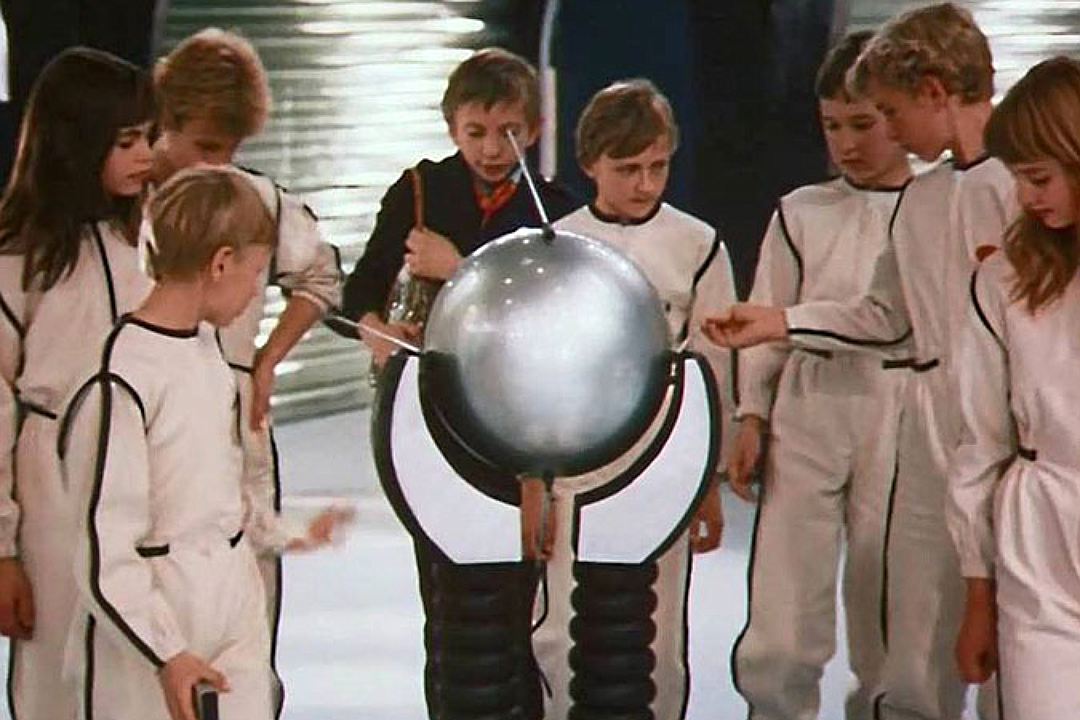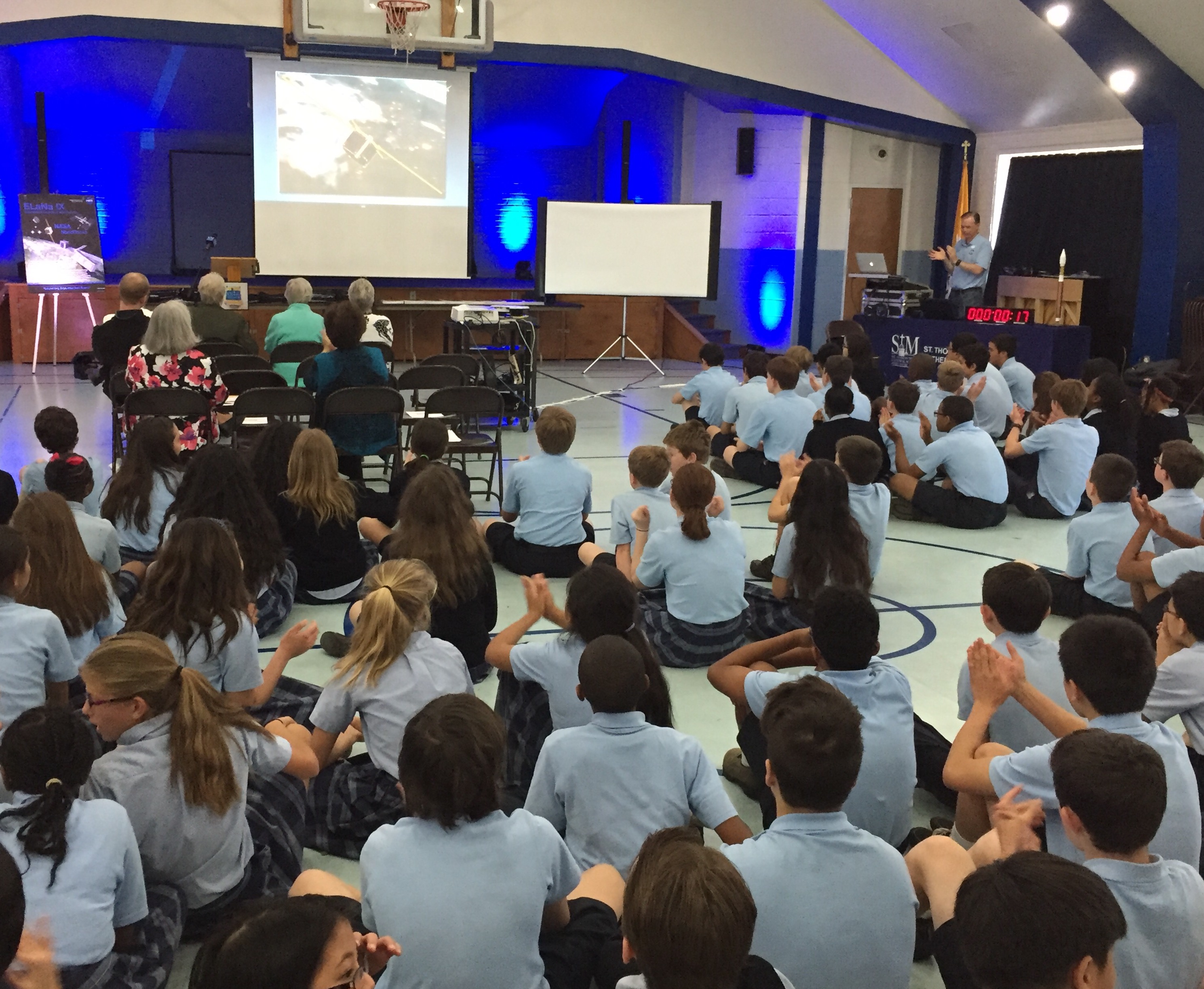The first satellite in the world made by elementary school students was launched into space.

Remember this shot from the movie “Guest from the Future”? At one time he made a strong impression on me - sure enough, the time is not far off when ordinary schoolchildren will create spacecraft with their own hands. True, then it seemed that all this was an illusion, and such a time would never come. But no - the future is already here, and the first satellite, built by the hands of schoolchildren, has been launched into space .
The satellite was designed by students of the Primary School of the St. Thomas More Cathedral School in Arlington, Virginia, USA. The CubeSat platform was chosen as the basis, and the satellite was named St. Thomas More (STM) Sat-1. It is clear, the guys had a mentor - this is Joe Pelligrino (Joe Pellegrino), a representative of the Goddard Space Flight Center NASA. Before launching the satellite into space, the students sent the equipment to high altitude twice with the help of high-altitude balloons.
Students independently created a satellite communication system. In the process, the guys used clothes made of antistatic materials in order not to damage the electronic components of the system.
After the satellite was ready, schoolchildren submitted an application to NASA, the CubeSat Launch Initiative program . The application was approved as well as the applications of 15 other organizations.
STMSat-1 launched into space aboard the Orbital ATK Cygnus. The launch was made on December 6 last year, the satellite was originally delivered to the ISS. And only now it was launched into open space by the NanoRacks CubeSat Deployer (NRCSD) system. Half an hour after entering orbit (about 400 km), the satellite transmitters started working, and the students received the first signal.

Schoolchildren are watching their satellite coming out of the ISS into open space.
The satellite is equipped with a camera that will shoot the Earth from orbit, sending pictures to available ground stations.
In addition, other vehicles have been launched into orbit, including CubeSat of the University of Michigan with the mission CADRE. The goal - the study of the dynamics of the upper atmosphere. Another satellite created by students of the University of Colorado. His mission is to study flares on the Sun, as well as the effects of flares on the Earth’s atmosphere.
Now we are waiting for the robot guitar competition.

